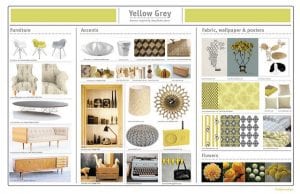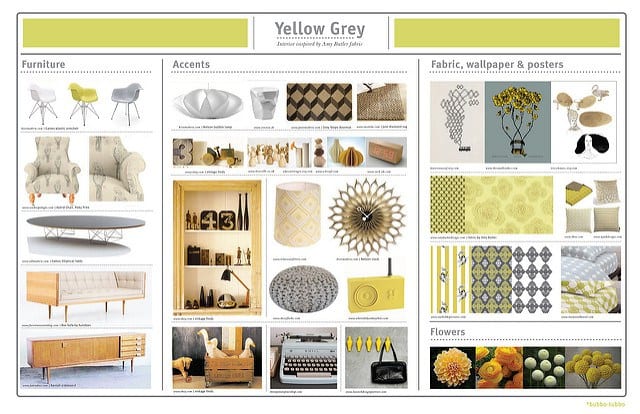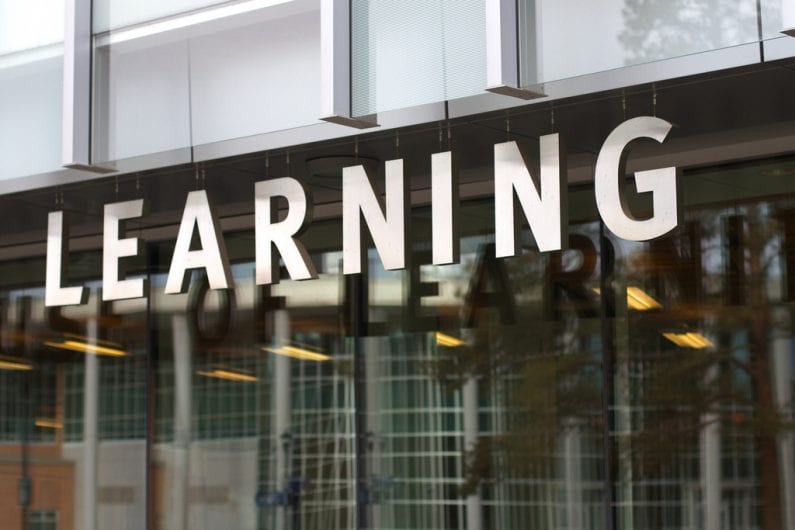
Building on this week’s Learning X theme of Module Makeover take a moment to think about how you approach giving your home a makeover or doing a spot of decorating. Some of us like to keep things simple and take the easy approach, going for cream or magnolia walls in every room. For others giving a room a makeover is serious business. Home interior magazines and design blogs are scoured, Pinterest boards created, interior designers and retailers are followed on Instagram whilst YouTube and TV shows serve as further inspiration. Building on all this research some individuals make mood boards, get swatches of fabric, tester pots of paints. Meticulous planning and research goes into the makeover process. All this research helps inspire and generate ideas. Certain designs and colour schemes standout and get copied, adapted, remixed and given a personal spin to reflect individual’s personalities. Some follow the latest design trends, others like to freshen up with more timeless styles or create new trends to fit the function of the room and the mood they want to create.
How does this process compare with how we approach our Modules in the VLE?
As each new academic session starts in many cases modules in My Dundee just get rolled over with a splash of magnolia on the walls to cover up the scuff marks. The reality is that often that’s all there’s time to do! Lack of support and training are also problematic and in a sense perhaps the checklists that have sprung up in many institutions are a way of ensuring that despite these issues there’s a degree of consistency in the student experience. VLE module checklists are important, but with so much potential to try something new and innovate it’s important that they don’t also limit us and stop us from being bold and ambitious and from experimenting with new online learning design approaches.
So what’s possible? Having thought about module checklists yesterday let’s move on from simply thinking about the VLE as a filing system housing core module information. To do this move the focus away from the VLE and a specific technology and look more closely at how you want to teach and what you want your students to learn. Think about whether the digital space and digital tools can help support and enhance your teaching and the student learning experience. Could the application of technology in your teaching help overcome any challenges that you currently face or help address issues raised by students in course feedback?
Just as looking at design features in magazines and blogs can inspire your home decorating we’re very conscious that the same holds true when designing your Module in the VLE. One of the limitations we have currently is that we can’t share modules in My Dundee so it’s difficult to explore what others are doing and to see examples of creative and innovative use of the VLE and other tools to support learning. We plan to change this over the coming year but in the meantime in the next section we’ll point you to some examples from elsewhere to see if they might help provide some inspiration and give you some ideas that you can take and remix in your own module.
Are there things you’d like to add to your online module or that you’d like to try or aspects that you’d like to improve? Keep a list of these things or start to make a list once teaching starts again.
Perhaps you need some inspiration. The University of Aberystwyth runs an annual Exemplary Course Award, to share good practice across the University. Aberystwyth has been running this for several years and found that the exemplary practice is being spread to other courses as a result. Take a look at the awards page and some of the video presentations from the award winners to see if there’s anything that you can take and apply to your own module.
Another place to seek inspiration, or confirm how not to do things, is to take a look at some of the MOOCs, Massive Open Online Courses, that are free to enrol on. MOOCs are available across the whole range of higher education disciplines so you should be able to find something that relates to your own teaching area. It’s also worth looking at MOOCs that are outside our discipline as you might find ideas and approaches that aren’t common in your own domain but with a bit of tweaking could work well and make a useful addition to your module. To explore some MOOCs check out the following:
For a MOOC with a difference check out CLMOOC – an open, collaborative, knowledge-building, learning and sharing experience,with a slightly more creative approach to designing and supporting online learning.
As you take a look at these various examples it’s also worth reflecting on how you learn and your own wider experience of using online learning and technology. What have been the good experiences, what made them good, is there anything in these experiences that you can take and apply to your module? Are there also things you’ve not liked, why haven’t you liked them? As you think about your own personal learning consider the different aspects of your learning, knowledge, skills and professionalism. Are there different learning theories and philosophies that can come into play and help to shape the design of the learning in these domains? Can technology also play a role to facilitate some of that learning online to complement what you do in face to face teaching and help your students develop as more self-directed learners?
Share your thoughts with us in the comments.
One of the criticisms levelled at the use of technology in education is that its adoption and application haven’t always been informed by scholarly evidence. There’s also a view that the technology is acting as the agent of change rather than the teacher. With this in mind one of the objectives of Learning X is to signpost some of the educational literature. To help with this we’ve created a Learning X group on Mendeley to share some of the research that we refer to and other publications that we think might be of interest and help to inform practice. You can join the group and add to the collection that’s that there.
A couple of papers to check out are:
- Power, J. and Kannara, V., 2016. Best-practice model for technology enhanced learning in the creative arts. Research in Learning Technology, 24(1), p.30231
- Shelton, C., 2014. “Virtually mandatory”: A survey of how discipline and institutional commitment shape university lecturers’ perceptions of technology. British Journal of Educational Technology, 45(4), pp.748-759..
Follow and join Learning X on Mendeley to explore and contribute to the collection.
Today’s link is to Jane Hart’s top 200 tools for learning. For the past 10 years Jane has been collating a list of the top 100 tools used in learning based on the votes of learning professionals involved in academia and learning and training more broadly. You can explore the current top tools and read how other learning professionals use them. If you delve deeper into the site you can see how these tools have moved up and down the list over the years. What’s interesting is how many of these tools are used by educators to support their own personal learning and their role as a teacher/trainer, they don’t just use the tools with their students. You’ll notice that Jane is also polling for the 2017 top tools so you can also submit your own personal top 10 learning tools. The slideshare below walks you through the 2016 top 200 tools for learning and you can also check out the best of breed across different categories of tools in 2016 on the website. If you’re interested in some of these tools and need any support to look at them further do be in touch.






